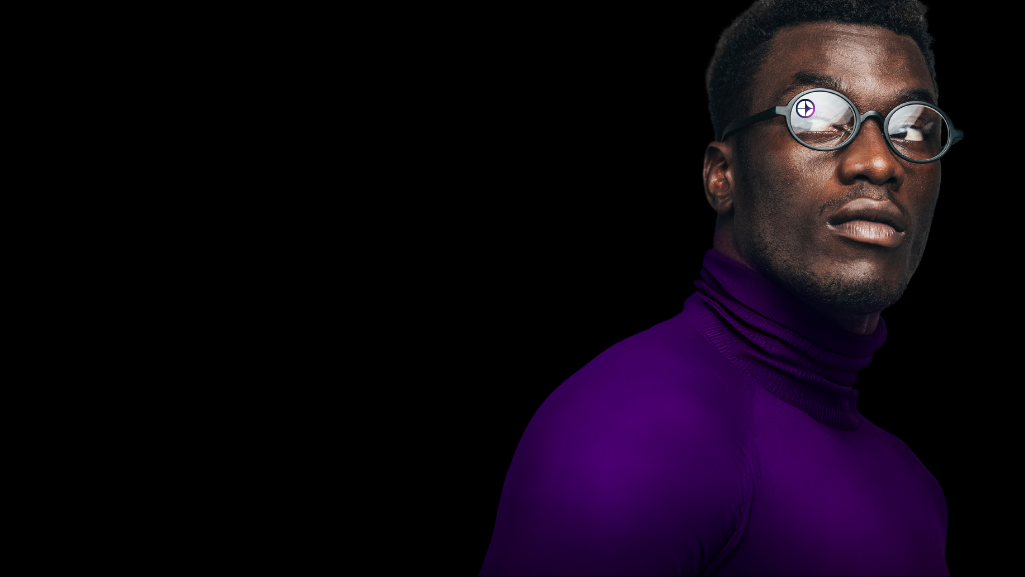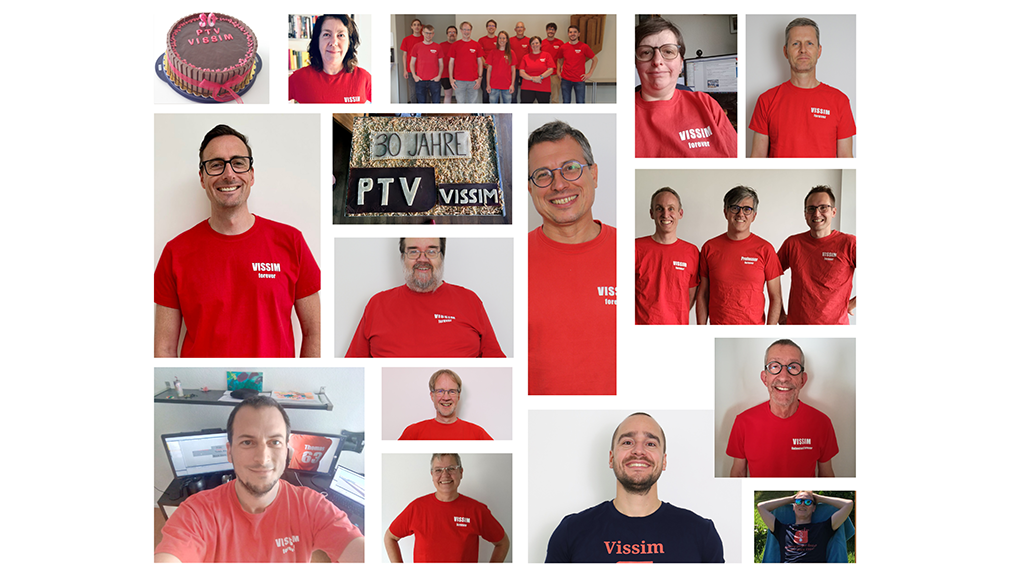For our April Fool’s prank, we dreamed up a wild concept: Umovity Vision Flow, a simple sticker that can be attached to any pair of glasses creating an infinite canvas to optimize traffic flow in a virtual environment. (For more details, check out the campaign webpage: Umovity Vision Flow)
But is there a kernel of truth in this jest? We sat down with our CEO, Christian U. Haas, and CTO, Mogens Abel-Bach, to explore the potential of Extended Reality (XR) in transportation planning and Umovity’s view on it.
How realistic is Umovity Vision Flow?
Christian: Let’s be honest, the idea of putting a simple sticker on your glasses and diving into virtual worlds feels straight out of science fiction at the moment. However, I firmly believe extended reality technology will evolve significantly in terms of form, factor and functionality, driven by companies like Apple. Look how much mobile phones have transformed since their bulky beginnings. The future holds exciting possibilities.
While Umovity Vision Pro was a lighthearted concept, a virtual 3D environment has real potential also for the mobility industry There’s no question that technologies such as Virtual Reality (VR), Augmented Reality (AR) or Mixed Reality (MR) – which seamlessly blend the physical and digital worlds – will have a profound impact on our lives and businesses.
Mogens: Absolutely agree, Christian. They offer revolutionary ways to experience and manage transport planning and shape the mobility landscape. Today, urban and traffic planners leverage digital twins of cities and traffic networks to model, simulate, and plan future mobility solutions. These transportation models and simulations are already crucial tools for designing safer, more sustainable, and efficient mobility systems. XR will further enhance these processes, taking them to the next level. My conviction solidified after experiencing the new Apple Vision Pro.
What makes Apple Vision Pro so special?

Mogens: The Vision Pro surpasses any VR headset I’ve encountered. It seamlessly blends information, simulation, and real-world surroundings – creating a stunning UI. The ability to control everything through head, eye, hand, and voice is groundbreaking. Applications genuinely feel like natural extensions of your environment.
It definitely inspired me to envision our technology for transportation planning and management as part of a spatial computer. This could transform the process and user experience of some of our applications into an intuitive and even entertaining experience, similar to playing Sim City within a virtual mobility environment. I already have a lot of ideas for our development roadmap!
Can you give us concrete examples of where Extended Reality solutions could create additional benefits in the mobility sector?
Christian: Equality in mobility planning is a fantastic example of where XR solutions can enrich traditional models. People have diverse mobility needs and patterns. To create a truly equitable and accessible system, planners need to deeply understand these variations. XR offers a powerful tool for fostering empathy. Planners can virtually experience a wide range of scenarios from different user perspectives. This immersive experience allows them to “walk a mile in another person’s shoes” and see how planned measures will impact the mobility experience of diverse groups. This ultimately leads to a more inclusive approach to mobility design.
Mogens: Additionally, VR can facilitate communications with different stakeholders a lot. If you can experience a change in infrastructure with all your senses, feel, hear and see it, you can warm up relevant stakeholders to a project much more quickly and speed up decision making processes.
For example, I recall a project in Singapore where they used our PTV Vissim simulation tool and a bike simulator to involve citizens in the design of a new cycling path. This allowed them to assess the route’s functionality and safety firsthand. Expanding digital twins and simulations with XR creates richer and more impactful experiences. Imagine citizens virtually cycling the proposed path, experiencing its layout and potential safety concerns. This deeper level of engagement will ensure that infrastructure is optimally tailored to the needs of its future users.
What exciting possibilities do you see at PTV and Econolite for XR technologies in the future?
Christian: As a forward-thinking tech company, we’re constantly exploring innovative solutions, and XR is definitely on our radar.
A few years ago, we already experimented with an AR application for mobility planning, blending a digital twin of a city into a physical space to see the traffic situation and visualize optimization potential. It clearly demonstrated how augmented solutions can democratize access to these tools and unlock a new level of engagement. The good thing is that we are already using our existing software to model digital twins and virtually simulate optimization potential with PTV Visum and Vissim and to optimize traffic flow in real time with products such as PTV Flows and Econolite Centracs Mobility: This is the perfect basis for expanding into new developments such as XR and we’re excited to build on this foundation.
Mogens: XR’s true power lies in its ability to transform how we approach transportation challenges and communicate optimization potential. It offers an even more data-driven, immersive, and collaborative environment for managing increasingly complex systems. This will result in many opportunities for Umovity, especially with respect to simulations and decision support. All our knowledge and technology are worth nothing if we are not able to empower our users in the best possible way. Therefore, we want to integrate technologies like spatial computing and XR especially for our simulation and real-time traffic management applications, to make the optimization through our technology even more tangible and easier for users and decision makers. I hope to reveal more details soon – so watch this space!



